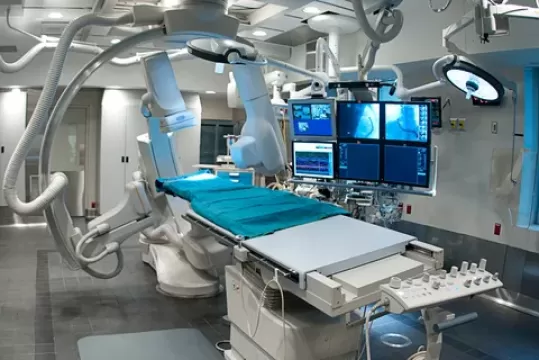Related Articles
the quality of medical equipment and supplies is crucial for ensuring effective treatment, accurate diagnoses, and patient safety. Whether in a large hospital or a small clinic, the tools used by healthcare professionals can significantly influence patient outcomes and the overall efficiency of medical care. This blog explores why investing in quality medical equipment and supplies is essential and how it impacts various aspects of healthcare delivery.
The Role of Medical Equipment and Supplies in Healthcare
What Are Medical Equipment and Supplies?
Medical equipment refers to devices and machines used in healthcare settings for diagnosing, monitoring, and treating patients. Examples include X-ray machines, MRI scanners, and surgical instruments. Medical supplies, on the other hand, include disposable items such as syringes, gloves, bandages, and personal protective equipment (PPE).
Why Are They Important?
Both medical equipment and supplies are fundamental to the functioning of any healthcare facility. They enable healthcare providers to perform their duties effectively, ensure patient safety, and contribute to the overall success of medical treatments.
The Importance of Quality in Medical Equipment and Supplies
1. Ensuring Accurate Diagnoses
Accurate diagnosis is the first step in effective treatment. High-quality diagnostic equipment provides reliable results, helping healthcare professionals identify the correct condition.
How Quality Affects Diagnosis:
- Precision and Reliability: Superior equipment offers precise measurements and reliable readings, reducing the chances of misdiagnosis.
- Advanced Features: Modern, high-quality diagnostic tools often come with advanced features that enhance their functionality, leading to more accurate results.
- Consistency: Quality equipment delivers consistent performance, ensuring that diagnostic processes are reliable over time.
2. Enhancing Patient Safety
Patient safety is paramount in healthcare. Using high-quality medical supplies and equipment minimizes the risk of errors and complications.
Safety Benefits:
- Reduced Risk of Infection: Quality medical supplies, such as sterile gloves and syringes, are crucial for preventing infections and ensuring patient safety.
- Minimized Equipment Failure: Reliable medical equipment is less likely to malfunction, which can prevent serious medical errors during treatment or surgery.
- Compliance with Safety Standards: High-quality products meet stringent safety standards, ensuring that they are safe for both patients and healthcare providers.
3. Improving Treatment Outcomes
The effectiveness of medical treatments heavily depends on the quality of the equipment and supplies used.
Treatment Benefits:
- Efficient Procedures: High-quality equipment ensures that medical procedures are carried out efficiently, reducing the time patients spend undergoing treatment.
- Enhanced Recovery: Better equipment can lead to more successful treatments and faster recovery times for patients.
- Patient Comfort: Advanced medical supplies often focus on improving patient comfort, which can enhance the overall treatment experience.
4. Boosting Operational Efficiency
Healthcare facilities need to operate smoothly to provide timely care. Quality medical equipment and supplies contribute to this by ensuring that operations are efficient and free from unnecessary disruptions.
Efficiency Gains:
- Reduced Downtime: Reliable equipment reduces the likelihood of breakdowns, ensuring that medical procedures are not delayed.
- Streamlined Workflows: Using high-quality tools and supplies helps streamline various processes within the healthcare facility, from diagnostics to patient care.
- Lower Long-term Costs: While quality equipment might have a higher initial cost, it often proves more cost-effective in the long run due to fewer repairs and replacements.
5. Maintaining Compliance with Regulations
Healthcare facilities are required to comply with various regulations concerning the quality and safety of medical equipment and supplies.
Compliance Benefits:
- Meeting Legal Requirements: Quality products often come with the necessary certifications and approvals, ensuring that healthcare facilities meet legal standards.
- Avoiding Penalties: Using non-compliant equipment or supplies can result in penalties or legal action, which can be avoided by investing in quality.
- Enhancing Reputation: Facilities that consistently use high-quality products build a reputation for excellence, attracting more patients and partnerships.
Choosing Quality Medical Equipment and Supplies
1. Researching Reputable Suppliers
The first step in ensuring quality is choosing the right supplier. Look for suppliers with a proven track record in providing reliable and high-quality products.
How to Find Reputable Suppliers:
- Check Credentials: Ensure the supplier has the necessary certifications and approvals from relevant health authorities.
- Read Reviews and Testimonials: Look for feedback from other healthcare facilities that have used their products.
- Assess Customer Service: Good suppliers offer excellent customer service, including timely delivery, training, and after-sales support.
2. Evaluating Product Quality
Not all products are created equal. Before making a purchase, evaluate the quality of the equipment or supplies thoroughly.

Quality Evaluation Tips:
- Inspect Materials and Build: High-quality products are typically made from durable materials and have a solid build.
- Ask for Demonstrations: For complex equipment, request a demonstration to see how it performs in real-world conditions.
- Review Certifications: Check if the product meets international standards, such as ISO or FDA approvals.
3. Considering Long-Term Value
While quality products may have a higher upfront cost, they often provide better long-term value through durability and reliability.
Long-Term Value Factors:
- Lifespan: High-quality equipment tends to last longer, reducing the need for frequent replacements.
- Maintenance Costs: Quality products often require less maintenance, saving money on repairs and downtime.
- Efficiency Gains: Efficient products streamline operations, saving time and resources.
Conclusion
Quality medical equipment and supplies are critical for delivering high-standard healthcare. They ensure accurate diagnoses, enhance patient safety, improve treatment outcomes, boost operational efficiency, and help maintain compliance with regulations. Investing in quality is not just about meeting legal requirements or avoiding malfunctions; it’s about ensuring the best possible care for patients and supporting healthcare professionals in their mission to save lives.
Choosing the right suppliers and products is essential for maintaining the quality of care provided by healthcare facilities. By focusing on quality, healthcare providers can ensure they have the tools they need to offer excellent care while also improving their operational efficiency and long-term sustainability. Remember, in healthcare, the quality of your equipment and supplies can make all the difference in achieving positive patient outcomes and operational success.
Note:- For read more articles visit on centralservices.
 The Random Collective Where Curiosity Meets Creativity
The Random Collective Where Curiosity Meets Creativity





